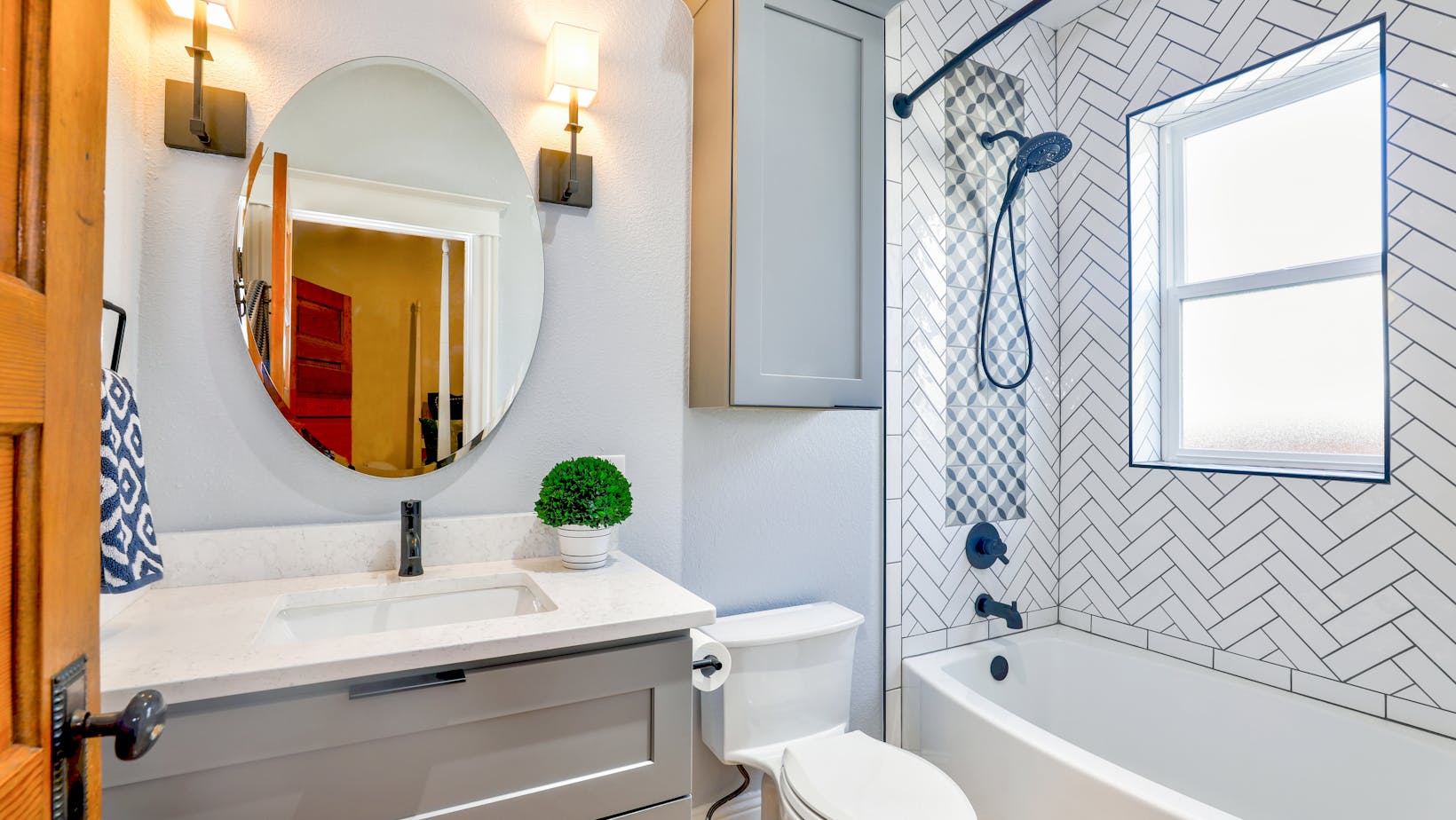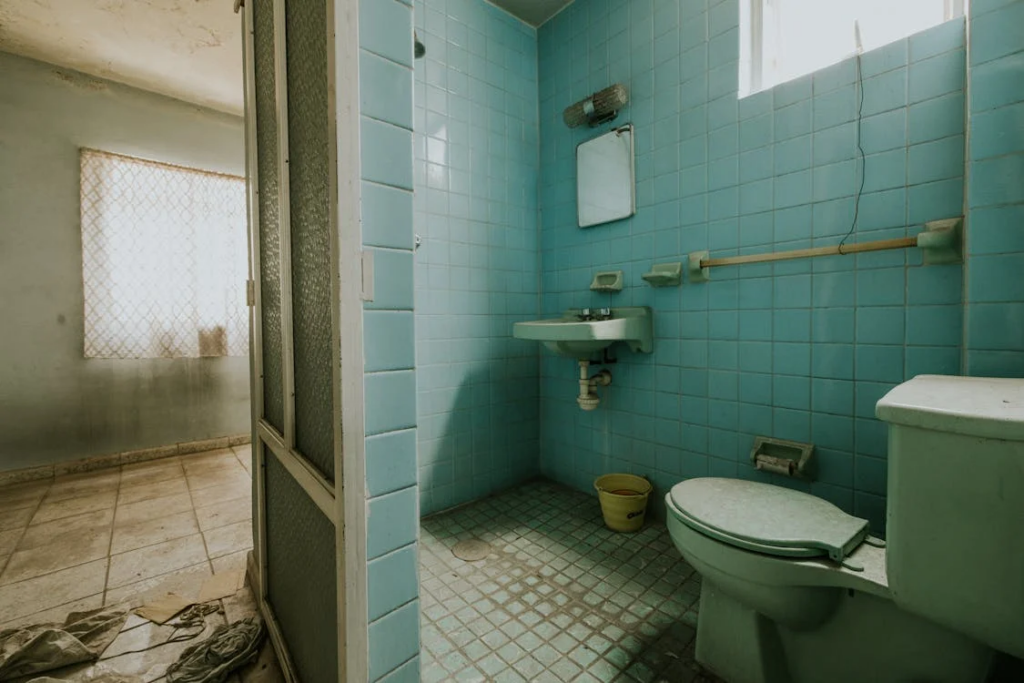Your bathroom is designed to withstand the rigours of daily use. However, even the most well-designed bathrooms can suffer from leaks, resulting in chaos and damage over time. From the structural integrity of your walls and floors to the health hazards of mould growth, the stakes are high when identifying and fixing water leaks in your bathroom.
Therefore, it’s crucial to remain vigilant and proactive in detecting and addressing any signs of water leakage in your bathroom.
For some help, below are the most common sources of leaks you should be aware of.
Splash Leaks
Splash leaks are a common nuisance in bathrooms, occurring when water can escape the confines of the tub or shower and wreak havoc on surrounding areas. These leaks threaten the integrity of your flooring and create an environment ripe for mould and mildew growth. To tackle splash leaks effectively, consider the following steps:
- Replace the Shower Curtain: If your shower curtain is old or worn out, get a new one that fits better and keeps water inside the shower.
- Re-caulk Around Tub or Shower Door: Regularly check the caulking around your tub or shower door. If it’s cracked or coming loose, re-caul it to prevent water from leaking.
- Replace Shower Door Gaskets or Frame: Inspect the gaskets and frame of your shower door. If they’re damaged or not sealing correctly, replace them to prevent leaks.
If you struggle to resolve splash leaks independently, don’t hesitate to seek professional assistance from experts like Alpha Sealed WA. They can assess the situation, identify any underlying issues, and provide tailored solutions to address the leaks effectively.
Clogged Sinks
Imagine this scenario: you’re running late, trying to prepare for your day, only to encounter the frustrating sight of a clogged sink. Hair, soap scum, and debris have created a barrier in your drain, preventing water from flowing smoothly. But don’t panic, as there are simple solutions to unclog your sink:
- Plunge: Grab your trusty plunger and give the sink a few vigorous plunges. The force created by the plunging action can dislodge the blockage and restore proper drainage.
- Boiling Water: Pouring boiling water down the drain can work wonders in dissolving stubborn gunk and clearing minor clogs. Be careful to pour slowly and steadily to avoid splashing.
- Baking Soda and Vinegar: Combine baking soda and vinegar to create a fizzy concoction. Pour the mixture down the drain and let it sit for a few minutes to break down the debris. Follow up with hot water to flush away the residue.
- Store-Bought Cleaners: Consider using specialised cleaners explicitly designed for clearing sink clogs. These products are formulated to dissolve tough blockages effectively and restore proper drainage. Follow the manufacturer’s instructions carefully for best results.
- Drain Snake: For tough clogs, use a drain snake. Insert it into the drain and turn it to clear the blockage. Just be careful not to damage the pipes.
With these simple remedies, you can confidently tackle clogged sinks and restore functionality to your bathroom in no time. Say goodbye to standing water and hello to smooth drainage once again.
Leaks From the Sink Faucet
A leaky sink faucet is a common household annoyance that can disrupt the functionality of your bathroom. Typically caused by damaged washers, gaskets, or o-rings, addressing this issue requires a systematic approach.

First, turn off the sink’s water supply to prevent further leaking. Then, remove the faucet handle carefully to access the internal parts. Check for damaged washers, gaskets, or o-rings and replace them if necessary.
Once you’ve replaced damaged parts, reassemble the faucet and turn the water supply back on to check for leaks. This straightforward process can help restore your sink’s functionality without professional help.
Toilet Leaking From the Base
Discovering a toilet leaking from its base can be alarming for homeowners. It happens when the seal between the toilet and the floor is compromised, allowing water to escape. The main culprit is often a worn-out wax ring between the toilet and the floor flange.
Over time, this ring can degrade or shift, leading to leaks. Loose or deteriorated bolts securing the toilet to the floor can also contribute to leaks. Tightening loose bolts may help temporarily, but replacing the wax ring is usually necessary for a permanent fix.
It involves removing the toilet, replacing the wax ring, and reseating the toilet. While some may feel comfortable doing this, others prefer hiring a professional plumber to ensure the job is done correctly.
Bathtub Faucet Leaks
A bathtub faucet leak may seem small but can cause big problems. Not only does it waste water and make your bathroom look messy, but it can also lead to mould growth and damage to your bathroom.
Plus, the constant dripping can be annoying and disrupt your daily routine. If ignored, the leak can worsen and even damage your plumbing system. Promptly fixing the leak is essential to avoid these issues and keep your bathroom in good shape.

If the faucet’s damage is extensive or outdated, you may need to consider replacing it. While this may require more effort and expense, it can provide a more permanent solution to the leak and allow you to upgrade to a more efficient and stylish faucet.
Final Words
Awareness of the common leaks in your bathroom is the first step towards maintaining a functional and comfortable living space. Whether it’s a clogged sink, a leaky faucet, or a toilet leaking from the base, taking prompt action to address these issues can save you from costly repairs and ensure the longevity of your bathroom fixtures.


More Stories
Tools for Effortless Paint Removal and Surface Cleaning in Home Renovations
How to Create a Sustainable Whole House Remodel in Utah: Eco-Friendly Materials and Practices
5 Signs Your Homes Toilet Needs to Be Repaired by a Local Plumber